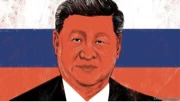|
mycomancy posted:...wait. Business research is a thing? I thought they just learned how to siphon money off labor and the rest was date rape and cocaine. Business studies is a less bullshit economics. Still bullshit, but not training-to-be-priests-of-the-faith-of-capitalism bullshit.
|
|
|
|

|
| # ? May 20, 2024 15:15 |
|
Apologies for the massive run-on sentences. They're the result of me starting to write a longer passage, and then condensing it into a single sentence without adjusting the structure into something easier to read.
|
|
|
|
Orange Devil posted:Business studies is a less bullshit economics. I've always assumed Business students were just grades on their haircuts and how well they can pretend to care about their professors family life and hobbies
|
|
|
|
War and Pieces posted:I've always assumed Business students were just grades on their haircuts and how well they can pretend to care about their professors family life and hobbies Yes, that's the principal aspect of economics.
|
|
|
|
speaking of old flawed studies being cited forever and taken as truth until somebody tracks it down, the lethal dose of nicotine is definitely one of those. I heard the 60 mg figure alot growing up and also took it as truth as it still ubiquitous in serious medical sources. https://www.ncbi.nlm.nih.gov/pmc/articles/PMC3880486/ Going back to the original self-experimentation study that extrapolated the lethal dose is hilarious because something is def off, when they start to describe the effects of 1-4 mg of oral nicotine (more or less as much nicotine that is absorbed from one of my snus pouches (swedish stuffed tobacco): "After 1–4 mg of nicotine, these authors felt a burning sensation in the mouth, scratchy throat, increased saliva excretion, followed by a feeling of warmness emanating from the stomach, which spread over the chest and from the head to the toes and fingertips. Afterwards the subjects became agitated, suffered from headache, dizziness, numbness, cloudy vision and hearing, light sensitivity, anxiety, dryness of the throat, coldness of the limbs, ructus [belch], flatulence, nausea, vomiting and rectal tenesmus. Respiration was accelerated and labored, pulse rate increased initially, and rose directly with the increasing dose; but later rose and fell erratically. After 45 min the experimenters lost consciousness. One of them suffered clonic seizures for 2 h, particularly of the respiratory muscles, also tremors of the limbs and shivering over the whole body. After the initial recovery, feelings of exhaustion, drowsiness and bleakness remained for 3 days." A rather extreme reaction for that supposed dose. Falukorv has issued a correction as of 20:53 on Jan 5, 2023 |
|
|
|
my dad posted:...words... I enjoyed reading this, thanks.
|
|
|
|
mycomancy posted:Well I figured that's when they were doing the cocaine and the date raping. What's wrong with this paper?
|
|
|
|
probably this whole thing quote:I reject the Darwinian assumption that larvae and their adults evolved from a single common ancestor. Rather I posit that, in animals that metamorphose, the basic types of larvae originated as adults of different lineages, i.e., larvae were transferred when, through hybridization, their genomes were acquired by distantly related animals.
|
|
|
|
Yep, that paragraph is just plain wrong and is invalidated by data from multiple subfields of biology. Here's a great synopsis on why it's dumb.
|
|
|
|
Thank you for the link but that paragraph is obviously factually correct.
|
|
|
|
I'll get around to continuing the effortpost I started, it's still Christmas season here with all the associated family stuff (also a bunch of Slavas) which I'm prioritizing a bit more. However, I do have to say that one one hand reading through names of Jewish Partizan volunteers who died in borderline suicidal missions to break non-Jewish people out of Nazi "encircle and exterminate" operations here, on the other hand watching news about Israel's latest adventures in deploying the final solution, and finally listening to our lovely right wing combo of "jews bad israel something to be emulated", I start feeling bile in my throat.
|
|
|
|
MeatwadIsGod posted:The best thing about Ol' Slow Trot I remember reading was that he'd regularly fall asleep during war councils and only pipe in to say poo poo like "this army does not retreat." The only mark against him is he didn't replace Buell as early as he could have. Iirc he felt it would be too impertinent so some of that southern propriety must have stuck with him. Buell was Thomas's boss not the other way around.
|
|
|
|
sullat posted:Buell was Thomas's boss not the other way around. Sorry that was confusing wording on my part. When I say "replace" I mean "take the command of" not "replace him with another general." Halleck offered Thomas Buell's command but he turned it down.
|
|
|
|
I was at a reenactment of Perryville recently and it was darkly funny to see a battle fought by two incompetents, Buell vs Bragg
|
|
|
|
Iirc at Perryville a few officers just sauntered into the other side's lines thinking they were friendlies. That happened to Leonidas Polk at least, but he escaped (although he was later 360 no-scoped by a German artillery officer). That's also where August Willich had a horse shot from under him and spent a few months in a Confederate prison. Bragg definitely had a lot of the same problems as the worst eastern Union generals - throwing subordinates under the bus, not following up on victories or at least retaining the field of battle after a victory. It's no surprise a dumbass like Jefferson Davis was eager to put him in an advisory role later on.
|
|
|
|
I stopped at Perryville 10 or 15 years ago, before I had a phone I could use to just look up anything at any time and I just could not understand what happened in that battle. I read all the displays at the museum and looked at the maps and it just confused me.
|
|
|
|
It’s been seven years since journalists first revealed Exxon Mobil Corp.’s decadeslong efforts to undermine the scientific certainty around climate change, despite knowing how serious a problem it was. Now, a new analysis demonstrates exactly how much the company knew — and how its public disinformation campaigns sabotaged the warnings of its own scientists. Exxon wasn’t just aware of the greenhouse effect. It had its own teams of scientists developing models to project the effects of carbon emissions on the global climate. And those models, it turns out, were highly accurate. “We have our scientists do good science, but we have our corporate board not listening,” Ed Garvey, who worked on climate science for Exxon in the late 1970s, said in an interview. The analysis, published Thursday in the journal Science, captures that sentiment. Exxon's models matched state-of-the-art simulations being used by academic scientists at the same time period. And the company's predictions accurately foresaw the warming that’s actually occurred since the 1970s, according to the study written by researchers Geoffrey Supran, Stefan Rahmstorf and Naomi Oreskes. The findings deepen Exxon's reputation for climate disinformation. And they may carry legal consequences as well, by becoming evidence in litigation that could cost the fossil fuel industry hundreds of billions of dollars. Two dozen U.S. cities, counties and states are suing Exxon and other energy companies in an attempt to show that they misled the public about their contributions to climate change. The company says its critics are wrong and that the findings show only that its scientists were keeping pace with evolving climate research. Spokesperson Todd Spitler said Exxon's climate research led to nearly 150 papers, including more than 50 peer-reviewed publications that the company made available to the public. “Exxon Mobil’s understanding of climate science has developed along with that of the broader scientific community,” Spitler said. He added that “this issue has come up several times in recent years, and in each case, our answer is the same: Those who talk about how ‘Exxon Knew’ are wrong in their conclusions.” He said the company is “committed to being part of the solution to climate change and the risks it poses.” But attorneys for the parties suing fossil fuel companies suggested the study would help make the case that Exxon knew its products were contributing to global warming and sought to blur the facts. “It moves the conversation from ‘Exxon knew that global warming was real’ to ‘Exxon was internally generating the same predictions about global warming as the climate science it was publicly disparaging,’“ said Niskanen Center chief legal counsel David Bookbinder, who represents several Colorado communities that are suing the industry. The research, he added, “should have a significant impact on a jury.” The lawsuits have been mired in procedural wrangling for years as the companies try to move the cases from state courts to the federal bench, where the companies believe the cases are more likely to be tossed out. Most of the cases were filed under state consumer protection laws, and appellate judges from Rhode Island to Hawaii in 2022 rejected attempts to quash the liability lawsuits. The industry has petitioned the Supreme Court to step in, saying that the lawsuits pose a “massive monetary liability” to the companies. The litigation has been compared to legal battles waged against the tobacco industry, which culminated in 1998 in a $206 billion settlement. The study notes that Oreskes, a lead author of the paper who has become a lightning rod for her work on climate disinformation within the energy industry, has served as a paid consultant to Sher Edling LLP, a San Francisco-based law firm that represents multiple challengers in the climate liability suits. Exxon had accused Oreskes in the past of failing to disclose what it called a “blatant conflict of interest.” The law firm “played no role in this or any other study by the authors (including but not limited to study conceptualization, execution, writing, or funding)," the study said. Sher Edling said Oreskes was paid for 3.5 hours of consulting in 2017 and has not done any work for the firm since. Alyssa Johl, vice president for legal at the Center for Climate Integrity, which supports the climate lawsuits, said the research “reaffirms and reinforces” two areas critical to the lawsuits. Exxon knew, “with startling accuracy, how fossil fuels would drive the climate crisis,” Johl said. And the study shows “that Exxon executives actively concealed and denied what their own scientists were telling them,” she said. She added that if “the next time Exxon's lawyers falsely claim the company didn't have this knowledge, or was unaware of the damage their products would cause, they'll have to contend with a peer-reviewed study showing those statements to be lies." The new analysis has its origins in a distinctly modern phenomenon: a viral tweet. Several years ago, study authors Supran and Oreskes, then working together at Harvard University, published a paper on Exxon's climate communications strategies. It caught the attention of Rahmstorf, a climate scientist at the Potsdam Institute for Climate Impact Research. He noticed a graph in the paper visualizing some of the company’s own climate projections — and he decided to do some investigating. Rahmstorf took the graph and overlaid it with real-world temperature observations to see how well the projections had actually performed. They turned out to be a startling match. “I think he was just taken aback by the overlap,” said Supran, who is now an associate professor of environmental science and policy at the University of Miami. “He reached out to us, and he tweeted about it.” Climate Twitter took over from there. The results began widely circulating, with other scientists sharing similar findings. And the idea for a more in-depth analysis was born. “There was like this penny-drop moment where, despite all the scrutiny on Exxon’s climate rhetoric by us and others, we realized the company's actual climate projections, their actual data, had just been hiding there in plain sight,” Supran said. “So, in essence, we decided to make a peer-reviewed version of that Twitter meme.” Supran, Rahmstorf and Oreskes combed through dozens of internal company documents and peer-reviewed scientific papers published by Exxon scientists between 1977 and 2003. In the end, they found 16 individual temperature projections published by Exxon — most of which came from models developed by researchers within the company. Twelve of these projections were unique from one another. They were highly accurate, the analysis found. Ten of the projections closely matched the actual warming of the planet. The projections were also similar to those produced by academic models of the time. In other words, they were just as good — and sometimes better — than the best models used by independent scientists. And while there’s always some uncertainty built into climate model projections — a margin of error, so to speak — none of Exxon's projections suggested any possibility of a future in which there was no global warming. “Actually it’s a pretty shocking level of skill and accuracy with which they were predicting global warming,” Supran said. “Especially for a company that then spent the next couple decades denying climate science.” Exxon for years publicly touted uncertainties in climate science, including the question of whether human-caused warming was occurring at all. But its own models indicated that warming from greenhouse gases was beyond question. The company has also challenged the reliability of climate models, when its own projections were turning out to be highly accurate. In his 2012 book "Private Empire: ExxonMobil and American Power," journalist Steve Coll documents the efforts of Lee Raymond, the legendary Exxon CEO who led the company from 1993 to 2005, to fight climate science. In 1997, as the Clinton administration entered final negotiations over the Kyoto Protocol, a global agreement to slash greenhouse gases, Raymond flew to China to give a speech questioning the need to cut emissions. “It is highly unlikely that the temperature in the middle of the next century will be affected whether policies are enacted now or 20 years from now,” Coll quotes Raymond as saying. A quarter-century later, Exxon executives now acknowledge the science of a warming planet. The company released a plan last year to achieve net-zero emissions from all the assets it owns and operates. But the pledge does not include emissions from oil and gas burned by Exxon’s customers, which accounts for the vast majority of greenhouse gases associated with the company (Greenwire, Jan. 18, 2022). Exxon has also begun to make investments in low-carbon technologies. In December, the company said it plans to invest $17 billion on technologies like biofuels, hydrogen, and carbon capture and sequestration by 2027. “Regardless of what you think about oil companies or what they say their intent is, it's always worth following the money,” said Alex Dewar, an analyst who tracks the oil industry at Boston Consulting Group. “While that is a small share of their overall capital, that is an increasing number and an important signifier of where they are headed.” Exxon’s new strategy is in line with other U.S. oil companies, many of which have focused on technologies that align with existing business plans, assets and expertise. That stands in contrast to major European oil companies, which are investing heavily in areas outside their traditional business models, like renewable energy and electric vehicle charging technologies. The new analysis underscores the historical disconnect between Exxon's climate scientists and its public affairs strategies — what Garvey, the former Exxon scientist, described as a corporate “two-headedness." Garvey was hired for a research project to collect direct measurements of carbon dioxide in the ocean and atmosphere. He wasn’t a climate modeler, but the work was closely related to the company’s modeling efforts. It was aimed at determining how much carbon the ocean absorbs from the air — a process that can lessen the warming impact of airborne emissions. The company didn’t attempt to steer or direct his team’s research in any way, said Garvey, who's now a research scientist and lecturer at Columbia University. The scientists were left to conduct their projects, and produce the best science, as they saw fit. Garvey left Exxon after a few years, when his project was discontinued. He completed his doctorate at Columbia and would later consult for EPA. He didn’t follow much of the company’s scientific research after his departure — but he did notice its climate-denying advertisements over the years. “I wasn’t at all surprised,” he said. “I was very disappointed because I knew the quality of the science that was being done.”
|
|
|
|
I'm sorry to quote a wikipedia article but the Germans were just such loving clowns in WW2quote:During WWII, British intelligence was able to glean details of new German technologies simply by considering their code names. For instance, when they heard of a new system known as Wotan, Reginald Victor Jones asked around and found that Wotan was a one-eyed god. Based on this, he guessed it was a radio navigation system using a single radio beam. This proved correct, and the Royal Air Force was able to quickly render it useless through jamming.[1]
|
|
|
|
Teriyaki Hairpiece posted:I'm sorry to quote a wikipedia article but the Germans were just such loving clowns in WW2 it rocks how they were so incompetent that british intelligence managed to run circles around them
|
|
|
|
Every single bit of the Nazi war effort was shambolic and stupid
|
|
|
|
StashAugustine posted:it rocks how they were so incompetent that british intelligence managed to run circles around them actually i think youll find that british intelligence was quite denobair and dapper only held back from their plans for world domination by their homophobia and misogyny
|
|
|
|
In an Al-Jazeera piece, Dylan Sullivan and Jason Hickel claim that British rule inflicted ‘tremendous loss of life’ in nineteenth-century India by causing the devastating Deccan famines. Imperial policies, they say, made famines ‘more frequent and more deadly.’ They cite the economic historian Robert Allen to suggest that Indian living standards declined in the nineteenth century, because the British rule ‘drained’ India of money and food. Indians were starving when the famines hit them. Colonialism triggered the genocide. Social media posts spread similar messages with religious zeal. Many blogs and sites sharing such sentiments have reprinted Sullivan and Hickel’s piece. Sullivan and Hickel are not doing anything new. In a 2001 book, Mike Davis said Britain’s apathy towards her Indian subjects caused mass deaths in late nineteenth-century Deccan. Indian nationalists argued a hundred years ago that food export supported by a free trade policy and the British-built railways left the Indian countryside with too little food. B.M. Bhatia said that ‘in the earlier times a major famine occurred once every 50 years,’ whereas ‘between 1860 and 1908, famine or scarcity prevailed in … twenty out of the total of forty-nine years,’ implying that colonialism made famines ‘more deadly’. Economic historians have examined and discarded every one of these assertions. Sullivan and Hickel are salvaging an outdated idea by ignoring the most important research done on the subject. I will offer five grounds to show why their version of history is incorrect and biased. First, the claim that colonialism caused famines cannot be verified against previous experience because there is no evidence that famines were less frequent or less deadly before. Whereas the government statistical system recorded the colonial-era famines, the precolonial data came from hagiographies and travelogues. These dissimilar datasets cannot be compared. The frequency with which famines occurred in earlier times depended on the frequency with which hagiographies were written. If this was once in fifty years, we would conclude that famines happened once in fifty years, as Bhatia did. The authors of these hagiographies praised the relief work because the kings paid them to do that. We might conclude that precolonial kings were more caring than the British. None of this makes any sense. Second, colonialism cannot be accused of causing famines everywhere. The famines that Davis called late-Victorian holocausts happened in the Deccan, 1876-77 in the Rayalaseema region west of Chennai (Madras), and 1896 and 1898 in the Deccan Traps closer to Mumbai (Bombay). All along, in the Indo-Gangetic Basin, the population rose. The Raj ruled over the north and south. Why did it spare the north? Here is the answer. The British Raj did not start the famines. Geography did. 1877 was the driest year in over a century (1871-1978) for which rainfall data exists. The average rainfall that year was 30 percent short of the long-term level, and a 25 percent shortfall developed again in 1896 and 1899. Monsoon failure of such an order can cause distress by drying up all accessible water sources. The effect was disastrous in the Deccan Plateau because it was normally much drier than the north and did not have rivers fed by the Himalayan snow, unlike the north. Monsoon rain was the primary source, and when that failed, cultivation stopped, and distressed people lived on infected water to die of cholera. Colonialism had nothing to do with the reason they died. Third, the living standard research that Sullivan and Hickel cite has a problem. Allen’s work on living standards is pathbreaking, but the India dataset on wages in northern India compiled by early-twentieth-century historians is of doubtful value. These historians left too few details on who earned these wages for what works, or on the labour market, or whether they were men or women, or the contracts involved. These are just numbers without context. A trend drawn by comparing such numbers over the long run may mean that the context of work changed, not the living standard. For example, there was an enormous expansion of casual-wage-based hiring of individual workers in the nineteenth century, whereas earlier employers often hired families or groups and paid them customary fees. The kind of work for which the Mughal household or urban silk factories or the East India Companies hired people did not exist anymore in 1900. Earlier wages were often job-based, later wages were daily or hourly. For all these reasons, later wages could look smaller, but that would not mean that the living standard had fallen. That Sullivan and Hickel rely on weak data is the least of their problems. The evidence is not relevant at all. Almost all the data that Allen and others used came from the Indo-Gangetic Basin, which did not see famine in the nineteenth century. There is nothing comparable—in fact, nothing at all—for the regions where the Deccan famines broke out. Fourth, the nationalist criticism of food exports has long been discredited. The economist Martin Ravallion showed in a 1987 article that food exports did not expose the countryside to a food shortage. Food exports rose when Indian prices fell below world prices or after a good harvest and fell when there was a bad harvest. In this way, trade stabilized domestic consumption rather than reducing it. Fifth, that colonialism caused famines is based on flawed logic. Dryland Deccan famines disappeared after 1900, though weather shocks did not. The significance of the end of dryland famines was momentous for India. It led to a permanent fall in death rates. From 42-50 per thousand in 1911-21, the rate fell to 33-38 in the next decade, 30-32 in 1931-41, and 25 in 1941-51. Any good theory must explain the end of famines and their occurrence jointly. Colonial apathy cannot do that because there is no good way to show that apathy ended around 1900. It is a nonsensical idea and an unverifiable one. This is why Mike Davis’s work cannot be trusted. He avoided showing how mentality changed, yet the end of famine demanded that he should. Why did the famines really end? Michelle McAlpin in the 1980s and recently Robin Burgess and Dave Donaldson suggested that the end of famine was owed to the railways. McAlpin examined the experience of the Bombay Presidency, where the second and third of the three Deccan famines had happened, and showed that markets and railways improved food distribution enough to reduce the impact of harvest failure. Burgess and Donaldson show that access to railways reduced local food price instability. In short, statistical research confirms that the railways caused the end of famines and delivered the gift of life to generations of Indians born after 1900. I have made a similar point about well water in the Deccan countryside. These works suggest a better theory of why the famines happened. The capacity of the states and the markets to provide food and water to the needy was small against the scale of the natural disasters. All large natural disasters reveal such a syndrome. They show that the capacity of the people in charge of relief can be constrained by poor information, distorted information, limited money, limited knowledge of causation, and conflict among stakeholders. Covid illustrated the play of all these things that limited the state’s capacity to cope. But Covid also showed how governments learned lessons and moved on. So did the Deccan famines. The Raj learned lessons. The three Deccan famines generated data and research under government sponsorship on a scale not seen before. The results were famine codes (a blueprint for relief), canal construction, railways, sanitation of water bodies, cholera control, and collection of weather, crop, and water data. The effort to gain the capacity to cope delivered a sharp fall in death rates from 1901. Droughts are, and were, common in tropical monsoon geographies. The start of a peacetime drought had nothing to do with states. But states could learn lessons and be better prepared. The Raj learned how the government could get better at managing massive weather shocks, the type to hit the Deccan at the end of the nineteenth century. Sullivan and Hickel dare not tell that story, for that would dilute their partisan message.
|
|
|
|
>guys the british ended famine.
|
|
|
|
Some Guy TT posted:
|
|
|
|
we all know that there were no more famines in India after 1900
|
|
|
|
Uhh those are some brazen arguments. I admire the boldness of opning with "only the Noble Empire kept records of the savages worth trusting, so there's no way to say if famines weren't EVEN WORSE before." On the other hand, if you bothered to read Mike Davis' book, there's all these official records and communications where the English are going "yeah we know there's a famine but we're just going to let them all starve."
|
|
|
|
vyelkin posted:we all know that there were no more famines in India after 1900 uh actually if you look carefully you can only see that there were no famines after 1900 (if you only look at this one part of the country which is far sparsely populated)
|
|
|
|
vyelkin posted:we all know that there were no more famines in India after 1900 You have to unskew the railroads
|
|
|
|
ma i married a tuna posted:Uhh those are some brazen arguments. I admire the boldness of opning with "only the Noble Empire kept records of the savages worth trusting, so there's no way to say if famines weren't EVEN WORSE before." Yeah, Late Victorian Holocausts destroys this guys dumb arguments effortlessly.
|
|
|
|
MonsieurChoc posted:Yeah, Late Victorian Holocausts destroys this guys dumb arguments effortlessly. Yeah but what's weird is that it's a response to scholarship building on that book.
|
|
|
|
Why don't they grow corn in India? Is it because of what it does to the soil?
|
|
|
|
https://twitter.com/depthsofwiki/status/1618698206946414592 lest we forget
|
|
|
|
|
Azathoth posted:lest we forget quote:Marshack has remained largely out of the public eye since 1979. For about a year after Rockefeller died, she dated cartoonist Charles Addams, who lived in the same apartment building as she did.
|
|
|
|
Reading a biography of Admiral Erich Raeder and what the gently caress:quote:The primary weapon of Germany’s new Weltmachtflotte would remain the battleship. Given the “new strategic situation,” only the battleship was capable of protecting Germany’s trade and attacking the enemy’s sea communications and eliminating the enemy’s sea power—a return to the primacy ofthe battle fleet and the decisive battle. Until the fleet was ready to attack the enemy’s trade routes, the U-boats were to act as a deterrent and carry the fight to the enemy’s sea lanes.¹⁶ Although he did not detail for Hitler the size of the navy he ultimately envisioned, it was clear that the future fleet was designed for the worldwide defense of German trade and empire. The numbers provided to Hitler in July 1940 were only the first step to the realization of these other goals. They were to be measured according to the final outcome of the European war and the extent to which its successful conclusion would produce both the geographic and material conditions for waging war on a global scale. The “final goal” included up to 80 battleships, 20 aircraft carriers, 225 cruisers, and 500 U-boats (the “provisional final goal” was for a fleet of 50 battleships, 12 aircraft carriers, 105 cruisers, and 500 U-boats).¹⁷ Although Raeder was careful not to share all his plans with Hitler or the OKW and did not always agree with his staff’s ideas, it seemed highly probable that in the heady days of summer and fall 1940 the long-held ambitions of the navy could be realized under the seemingly invincible leadership of its führer. never mind actually building all of this poo poo - how were they even going to fuel all of it??? it's loving ridiculous!
|
|
|
|
If you want a hearty lol look at how much steel Nazi Germany spent on producing useless surface ships.
|
|
|
|
sounds like someone was overcompensating p bad
|
|
|
|
the guy in charge of the navy kept telling his boss they need hundreds of big new beautiful ships, quelle surprise
|
|
|
|
One of my favourite nazi economic facts is that Germany in WWII almost ran out of coal (despite being, you know, Germany) because they hosed the trains up so badly
|
|
|
|
Well they were using the trains to burn *something*.
|
|
|
|

|
| # ? May 20, 2024 15:15 |
|
gradenko_2000 posted:Reading a biography of Admiral Erich Raeder and what the gently caress: ah but see it's only needed for the decisive battle! put it out to sea for two days, win the battle, job done.
|
|
|


































